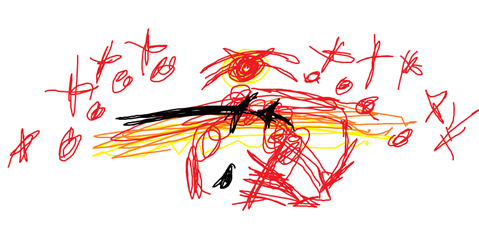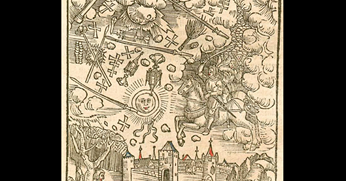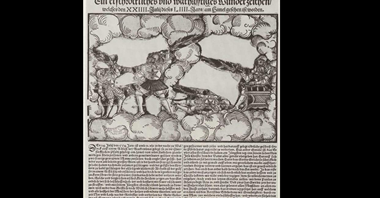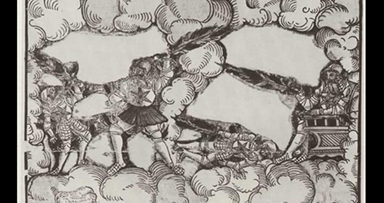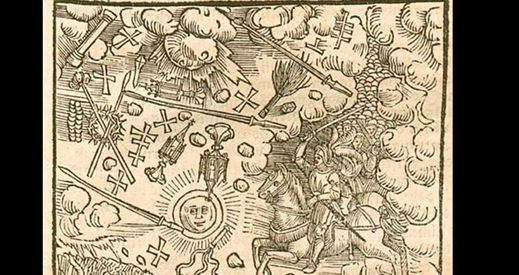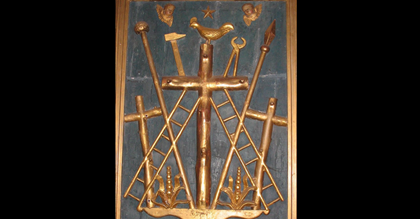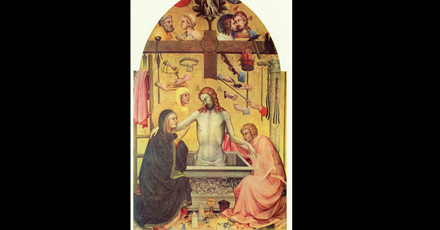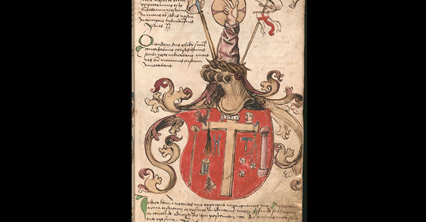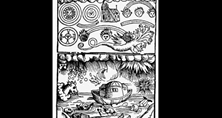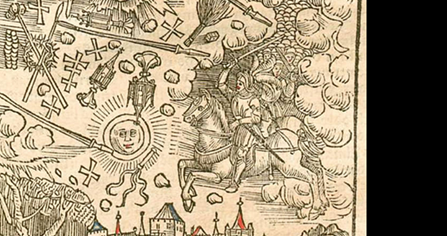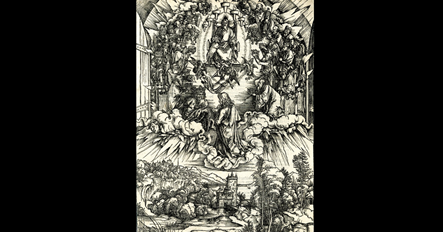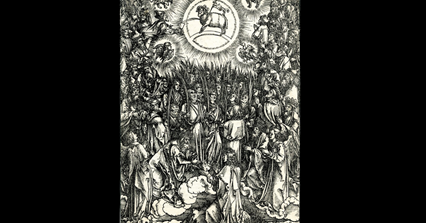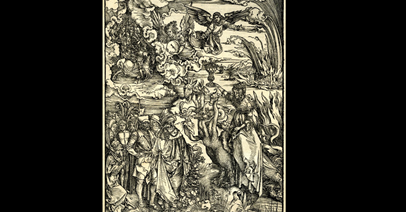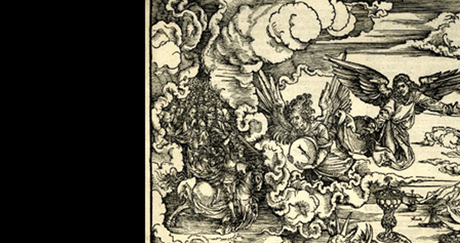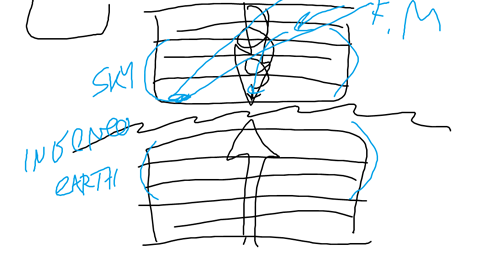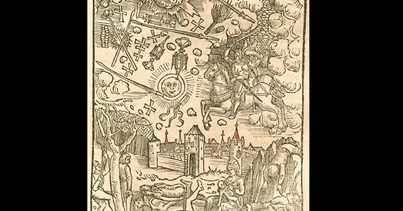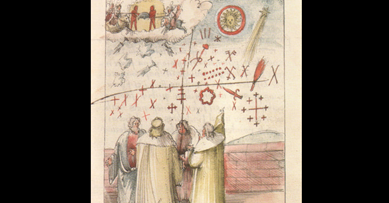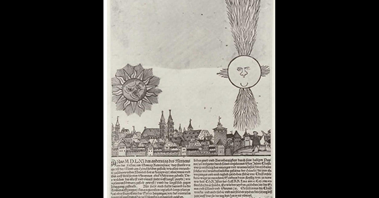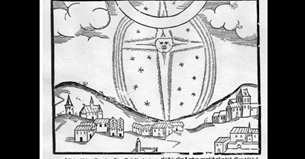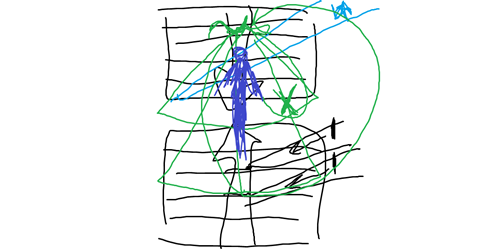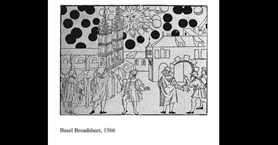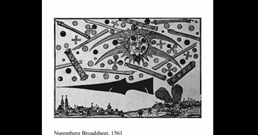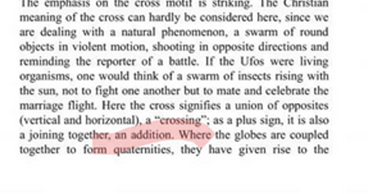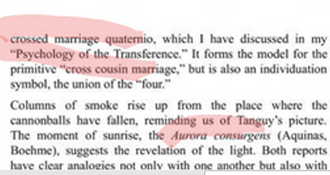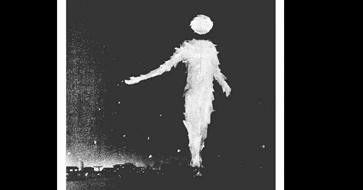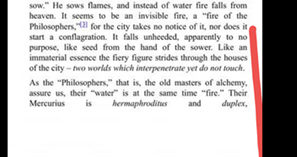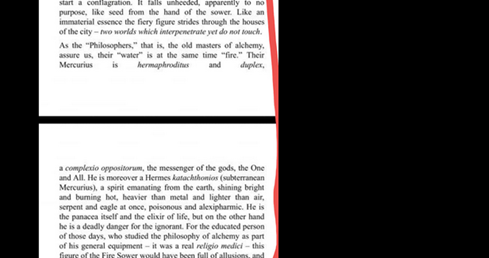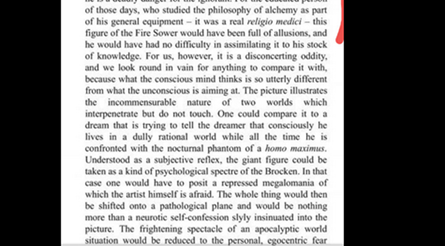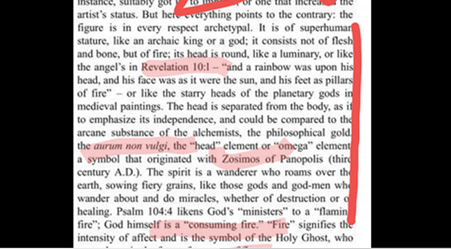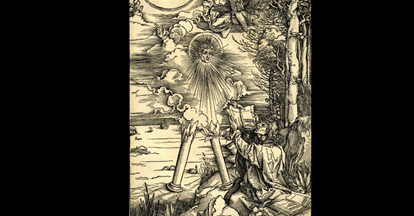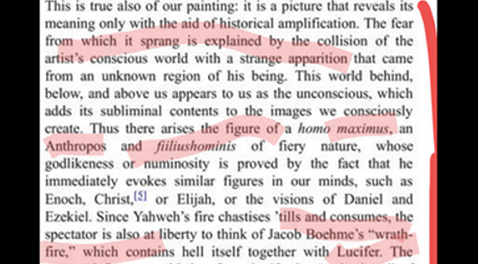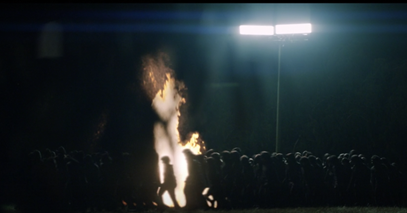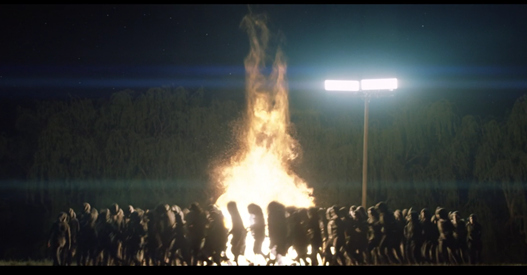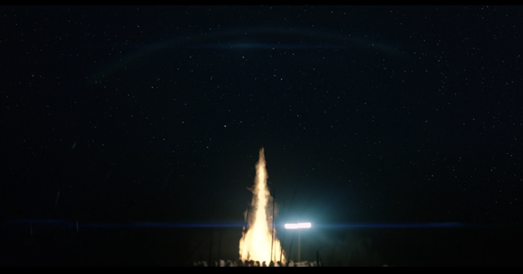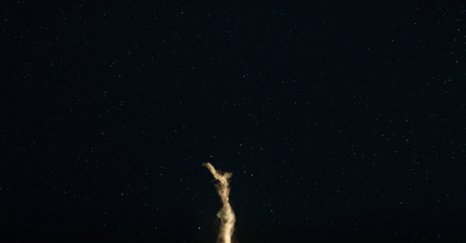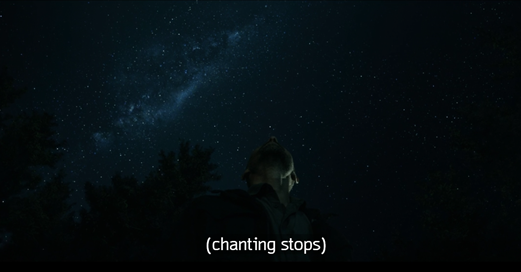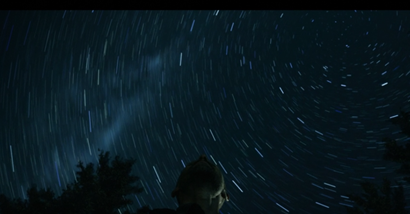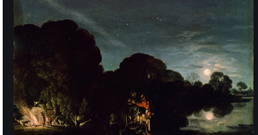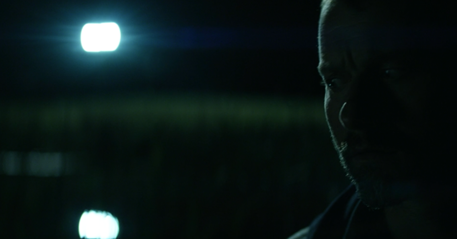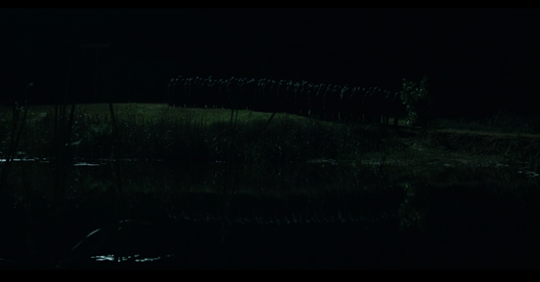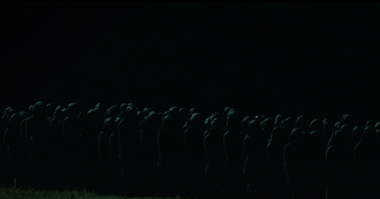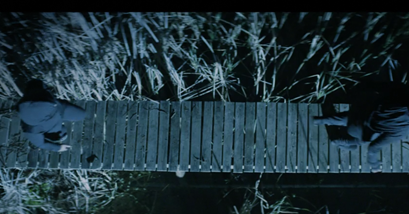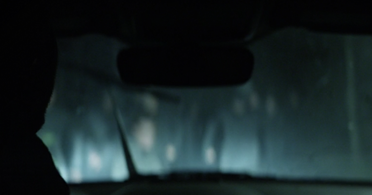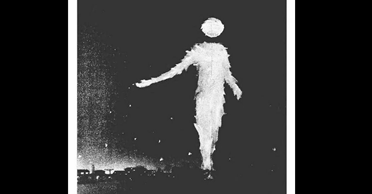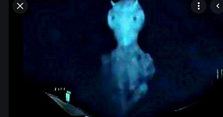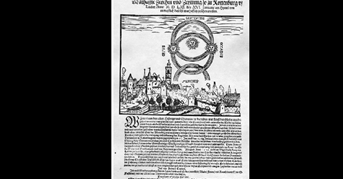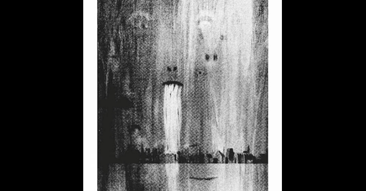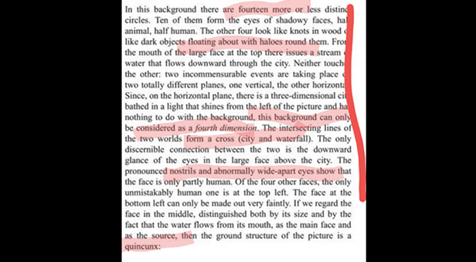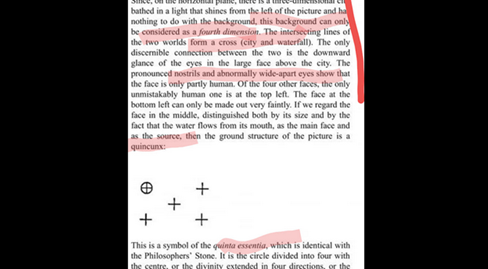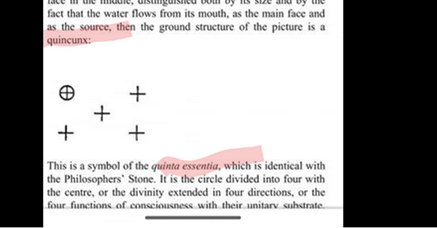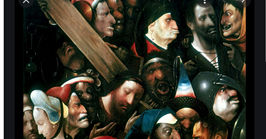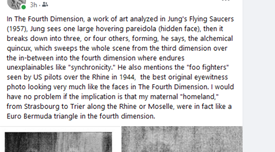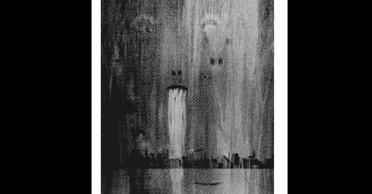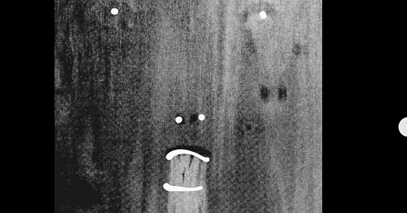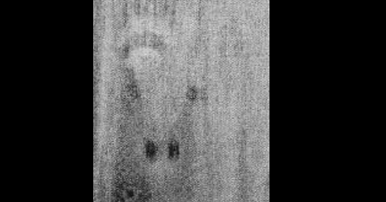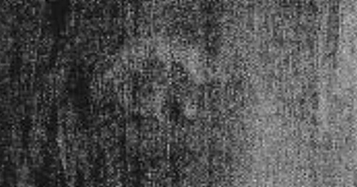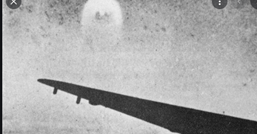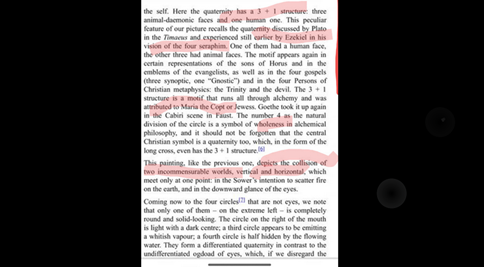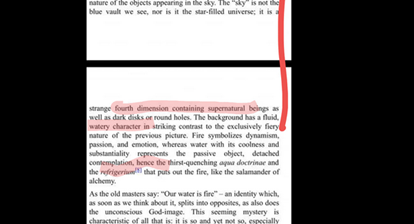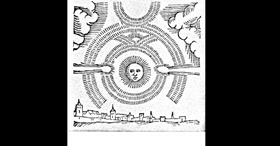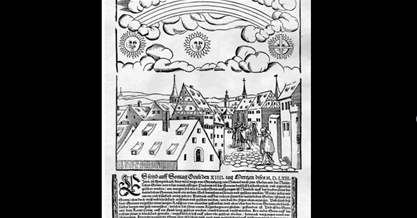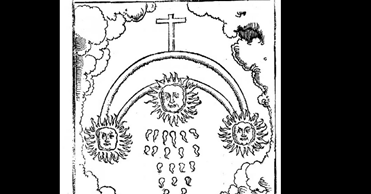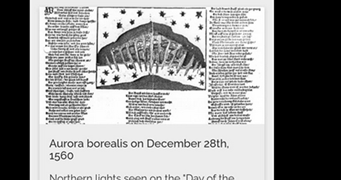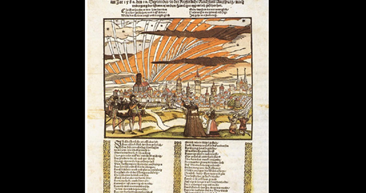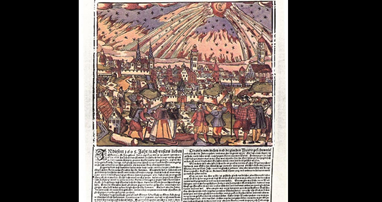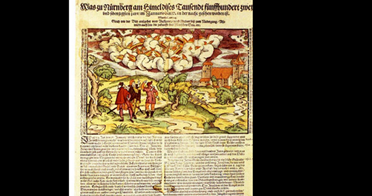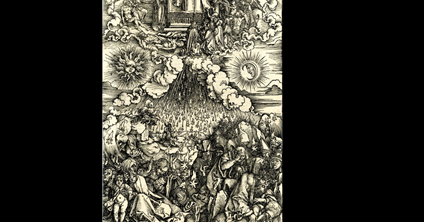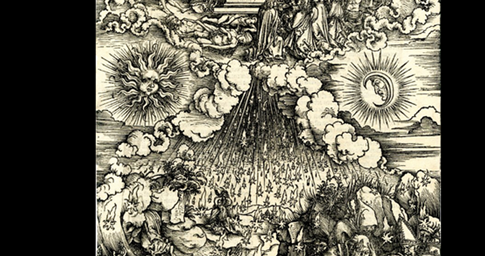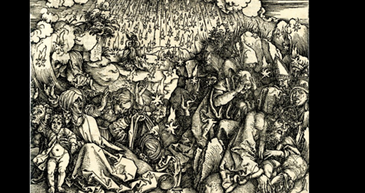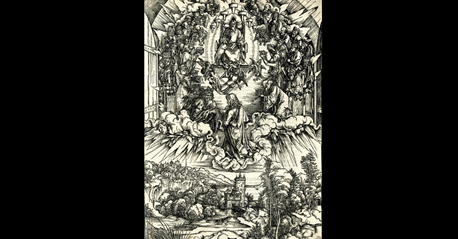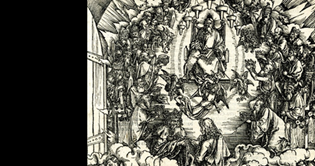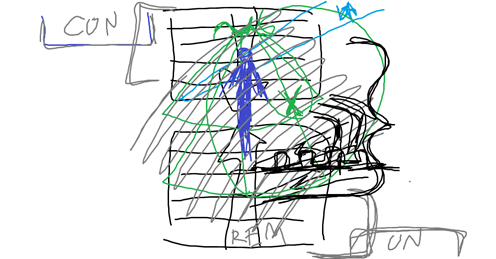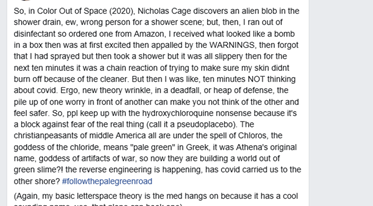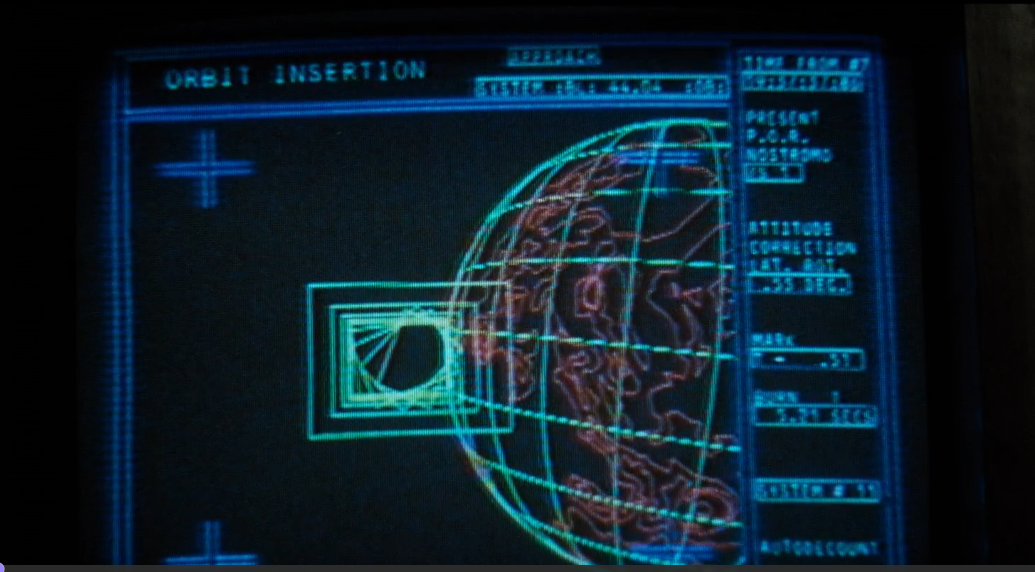rev., Jun 3-4, 2021.
Disclaimer: As I only see art virtually now, this is a thought piece and not a review.
David Altmejd’s show at David Kordansky, The Enlightment of the Witch, really struck home again, in my mood of “synchroetherrhoe” everything all at one flowing together, as it seems like I have survived the covid lockdown era, and so I winged it in an attempt to read it, on FB
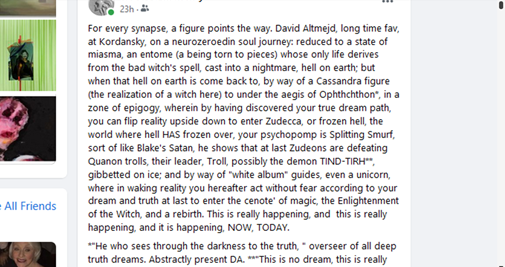
and so, then, I take you through it.
“For every synapse, a figure points the way. David Altmejd, long time fav, at Kordansky, on a neurozeroedin soul journey: reduced to a state of miasma, an entome (a being torn to pieces) whose only life derives from the bad witch’s spell, cast into a nightmare, hell on earth
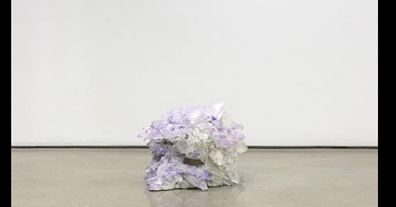
“but when that hell on earth is come back to,by way of a Cassandra figure (the realization of a witch here).
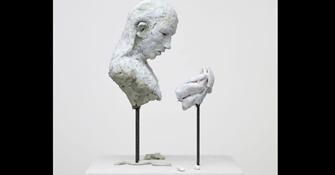
“to under the aegis of Ophthchthon*, in a zone of epigogy, wherein by having discovered your true dream path, you can flip reality upside down to enter Zudecca, or frozen hell, the world where hell HAS frozen over, your psychopomp is Splitting Smurf
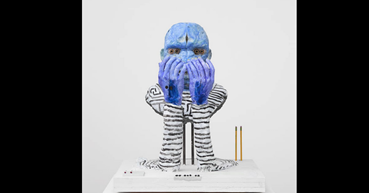
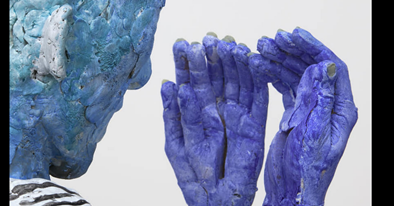
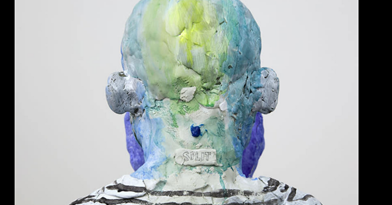
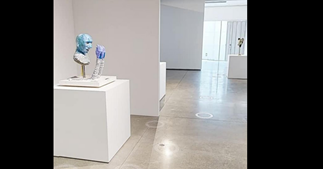
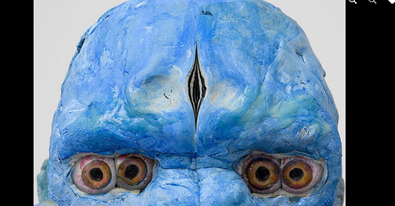
sort of like Blake’s Satan
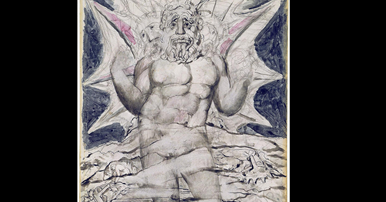
he shows that at last Zudeons are defeating Quanon trolls, their leader, Troll, possibly the demon TIND-TIRH**, gibbetted on ice
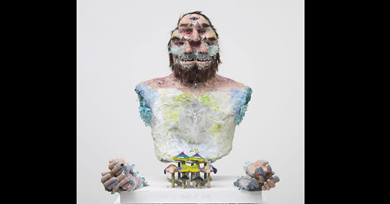
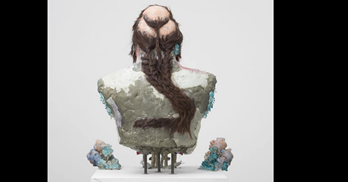
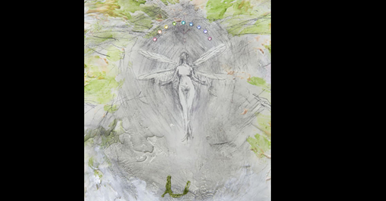
and by way of “white album” guides, even a unicorn, where in waking reality you hereafter act without fear according to your dream and truth; at last to enter the cenote’ of magic, the Enlightenment of the Witch, and a rebirth.
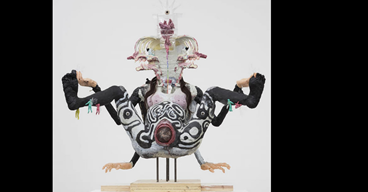
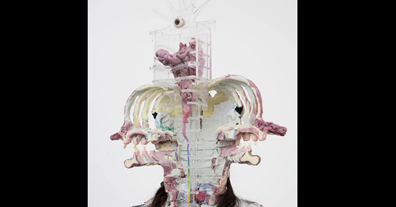
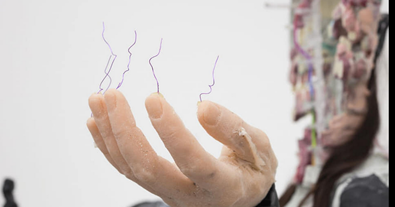
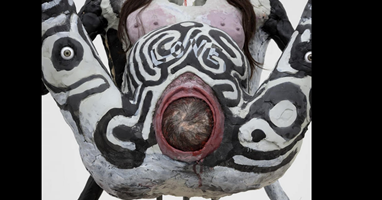
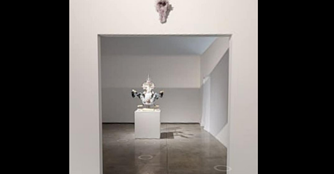
“This is really happening, and this is really happening”, and it is happening, NOW, TODAY.
And. then, I also provided a key
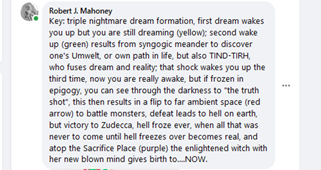
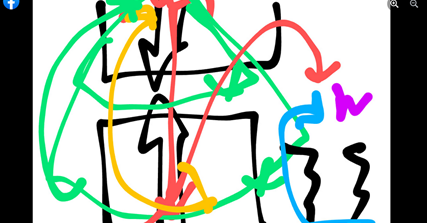
now, this notion of Zudecca came to me a day earlier, as I also posted, about Deana Lawson

but, then, as I do, on FB, where I play with theory “for entertainment purposes only,” I pushed it, and so looked up frozen hell, and the frozen hell phase we are now living in, and it turns out that in the fourth level of the ninth ring of hell Satan sits in ice, in Judica, but then since that title seems to whisper of antisemitism I took a Muslim name for the hell of ice, zambeera, so it becomes Zudecca.
This notion is built up on the power of the surge of “synchroetherrhoe” events that have taken place in my reading and movie culture in the last sixty days. Time and again, I find that no sooner do I lay out a new possibility in theory, that some art is out there greeting it, realizing it, as in the Sunrise and Sunset show in Berlin, and other places. Theoretically, this is based on the whole reappraisal in 3D of the full dimensions of the three states of nightmare in the Eldritch formation, and about the emergence of syngogy and epigogy as types of consciousness that relate to states of dreaming in the flips and turns of the activation of the Eldritch formation.
The change came when Wolfwalkers (2020) helped me work out the greater complexities in flips in the syngogic dimensions of what happens when one wakes up a second time in the eldritch. That is, to return to it: first, there is the first nightmare, you have, whoosh, it leaps you back up to the lattice, in hypnagogy.
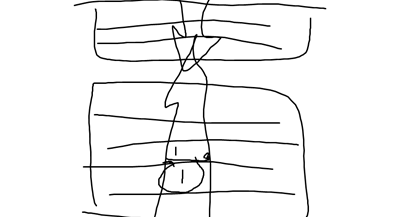
this can be not unlike a conjure attack situation, a true, classic nightmare, in all its forms, this is where Fuseli’s nightmare takes place, and she is not woken up from it. But, then, in the eldritch, when you wake up from this nightmare, you are in fact still sleeping, this is the no sweat part, and in that state you experience a more intensive dream experience
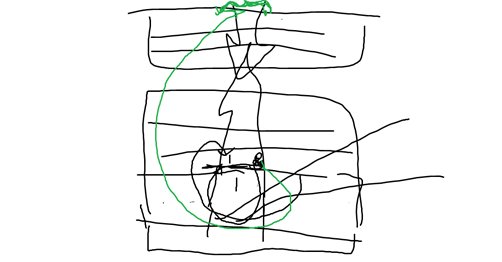
but this dream has a more intense nature, you appear in it as not you, but as you embodied in some abstract or other form (in Wolfwalkers it is the girl represented by her smell, by the Umwelt, that is, of the wolf she has become). As a result, this dream has a transformational and Umwelt quality
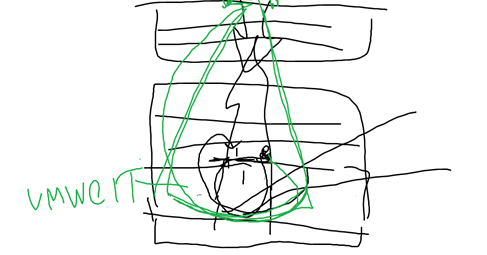
and, for a human, that dream path, specific and unique to you, perhaps, is the equivalent to an animal’s umwelt, the few steps required to keep it alive in the hunt (I give the example in common terms of a path used by a person to get to a site onlline, by a well worn step by step, so I always get to my rmarts site by going to “Bava Black Sunday”, then clicking over, there, three steps, same three steps every time, it is like the sequence of a safe combination). that is,in this dream, by the Far Path to the Far Door, etc
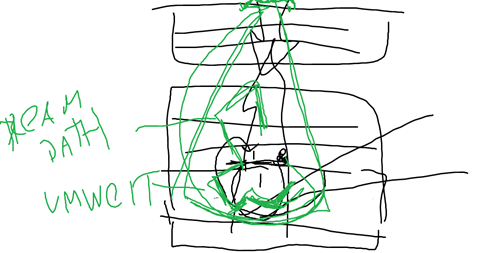
but this second dream has a shock hid in it, which involves contact with the demon TIND-TIRH, “This is no dream, this is really happening”, and so this realization, this fusion of dream and waking reality, or some deeper reality, results in a fierce ephialtic leap, which brings up the whole substrate of the dream, so a FLIP, and this then creates a state where in syngogy freeze you cannot quite tell the difference between dream and reality.
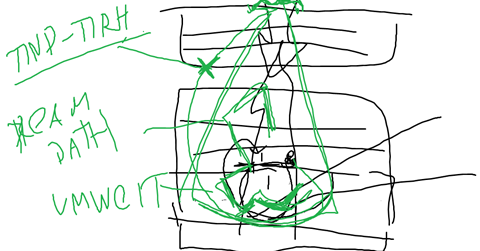
This flip happens this way
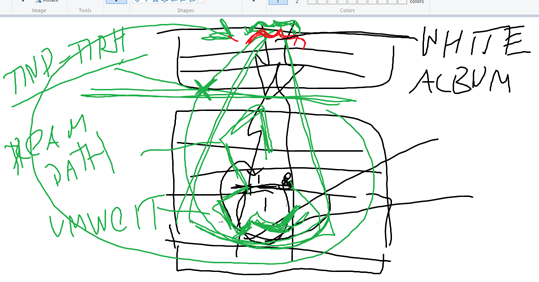
but, now, you are in the third nightmare, and several things can happen. Most opportune is you can, from your paralysis, like the episodes I had in my 20s, experience in a freeze a dysmetropsic flip, and that then opens up ophthchthon, as such
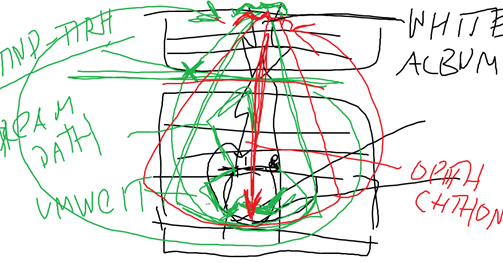
Theoretically, this would then let you wake up enlightened, to live in the security and certainty of your Umwelt, to live in a state of white album.
But there are also other things that can happen in the epigogic state, which is my name for it. If white album insight takes hold it can open up from inside-vigilogogic, or inside-hypnagogic mind space to the cenote space I have been writing about, with a different scale of imagination at work in it, since March, and its working out that way in The Amityville Horror, so if the realization of living White Album is the key, that can open up the path to, under the Blue Sun, the cenote to deep brain, as such
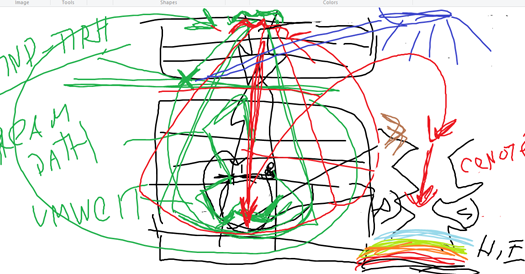
so. The white album controls ophthchthony, and if you see the “truth shot” that can then cause a final leap to full realization, and leap you all the way out into fata morgana ambience, to then through either Heaven’s or Tannhauser gate (as fill in later), experience an encounter with monsters created by the emanations of hell on earth.
But, in a recent essay, working through the nature of hell in Dracula (1979) I went back to Alien for an analysis of the land of the Blue Sun. This brings to mind the balcony POV which I addressed in the Irish movie Spectre (1996) with Alexandra Paul and considered as well as Ash’s perch over the perilous outing in Alien (1977). According to this trope, as I wrote about it in Alien
they are overseen in their exploration of the ping by Ash, in his bay window, the Blue Sun itself
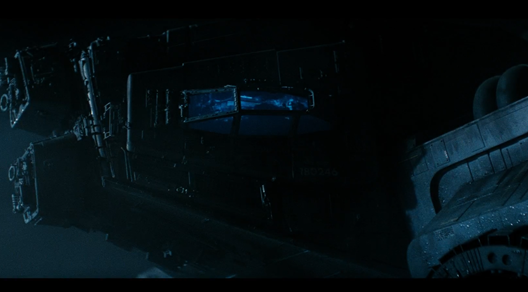
the graphic space is, just like Jodorowsky’s long shot, a mis en abyme, care-less of the gradations of ambient vigilogogic space. But, then, the planet will have to be considered, relative to them, an ambient space, that when they land on it, drops into a spatial equivalent of hell on earth, in sentient outer space, and then when they land, they are overseen by Ash, who is suspect and later will be revealed to be death, so it IS a thanatopsis of sorts.
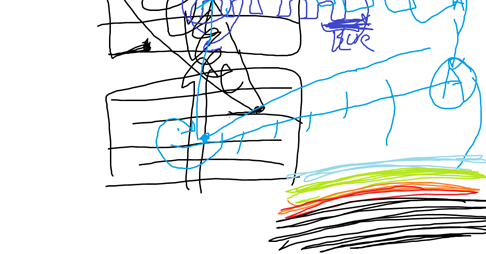
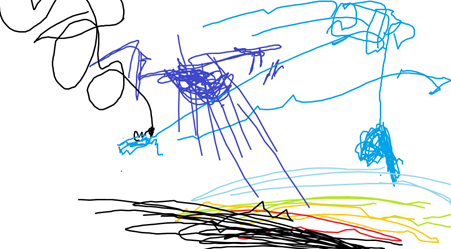
I suppose the only place, hypnagogically, that such a place in “outer space” could exist in the mind is below the bottomless pit of hell on earth, and so I have to term it Tartarus, which was a special hell below hell which was reserved solely for demiurges or gods hurled there from Olympus, and imprisoned in perpetual darkness (the Greeks had to have created the idea to conform to some psychological pressure)
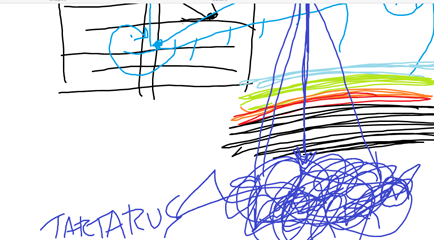
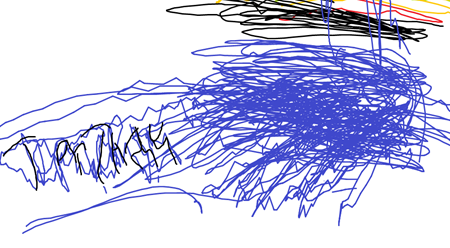
this is what the whole construct, everything vis a vis each other, looks like
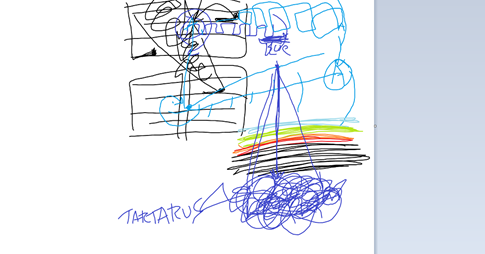
I guess I will then have to argue, keeping a logic operable in my working out of the relations between
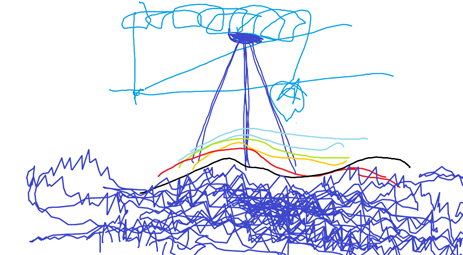
Alien hypersleep 2 9 21
hypnagogy and vigilogogy, a flip from Tartarus on up over the whole rest of the other construct, to make by another form of the Big Sleep, the Hypersleep, a delirious dream flipping formation, all of it feeding in
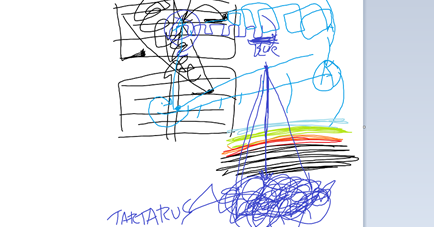
the most telling fact-in-form, that is, a form they came up with which in fact corresponds to hypnagogic psychodynamics of Ash’s bay window as oversight, and it is blue, and since he is suspect it is death, that is, he knows death is a risk, and he wants to minimize revealing concerns as to that, since the creature is more important.
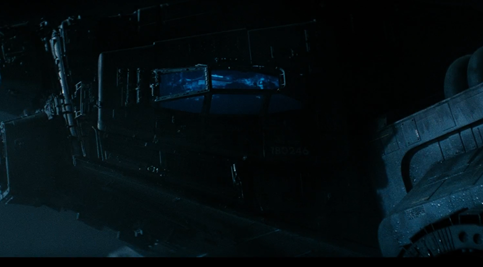
this secret evil, sabotaging things, is reinforced by this shot of an evil overseer, The Blue Sun thanatopsis eyed evil one
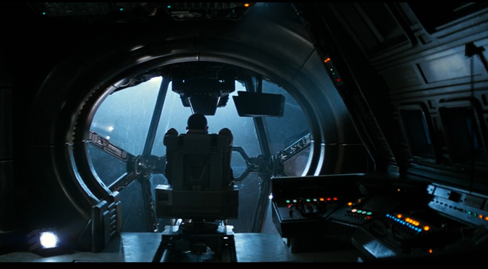
everything around so that they cannot see anything
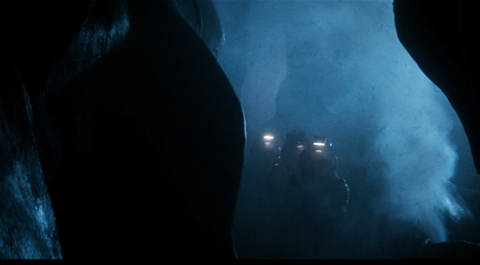
then, also strange, as if combining the color scheme of my rendering of hells on earth, here sunk into the deep blue of Tartarus, we learn that the atmosphere is “primal,” so Chloros reigns
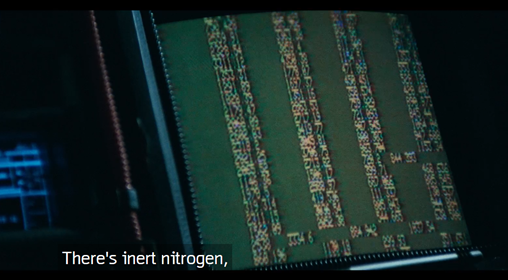
it is also amusing that this is the first time we get a view of the cat as overseer, the cat represents the sanity of the living moment, I suppose, ever watchful for deceit and evil, a guardian god, watching over the watchers. This position makes of him the embodiment of the Blue Sun, that is, thanatopsis, he is, simply, by this, the realization of the saying that “death has come to our little town,” or, as Pleasance said not a year before in a movie he will be much more remembered for and kept itn “he’s come home,” and he is death, death has come.
This posits “outer space” as imagined as a hell below hell on earth, and it is in that zone that the deepest things happen, I called this place Tartarus, it would be here, in this graph, but you can get to it ONLY by way of Heaven’s (for truth) or Tannhauser (for lies, or monsters, even) Gate, with the balcony or gargoyle like Antaeus looking over it
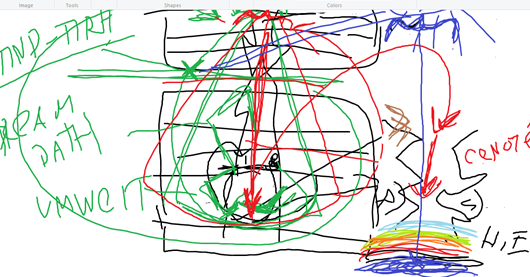
I do not want to create another type of –gogy for this, but, let’s face it, THIS is where the monsters are in the mind, in the deep brain, down the cenote, in hell on earth activated, with the formicarian and the ommatidian gaze, this is where almost ALL of the artists I really like are mentally located, doing their work, encountering the sentient universe of monsters and the like, by way of epigogy, after your life has learned the truth.
BUT….there must be a benign aspect of this too, no? so, let’s posit that in entering into this world, you come out of it, and this is due to being in ambient epigogy
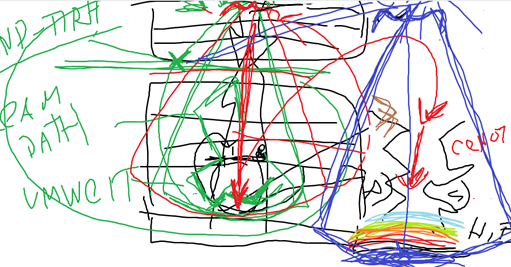
and IF you are able to overcome the demons, and the monsters, and not submit, then Tartarus freezes, and becomes Frozen Hell, or as I call it Zudecca. We are now, I argue, due to the afterschocks of BLM reckoning, the Biden Presidency, then the changes to the mediation and practice of industries due to covid lockdown and its ultimate consequences, no doubt to come, in a period of hell hath frozen over. And this is where the great positive demons are now, so while I see Blake’s Satan in ice, he is in, in fact, Tartarus
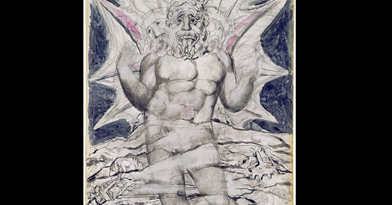
that ice then expands and the whole thing, as in an effulgence of ice, LIKE IN AMITYVILLE HORROR 3D, and the whole of the epigogic POV of the ambient and sentient becomes Judecca, hell frozen over, that is, a kind of heaven on earth.
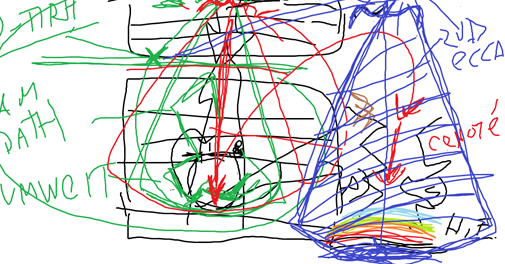
and at the top of it, replacing Antaeus, who lifted you down in, you get, I think, Altmejd’s Splitting Smurf, who just might be the first time any artist has given sight of this particular daimon, or god of day, the god of today (yesterday, June 2)
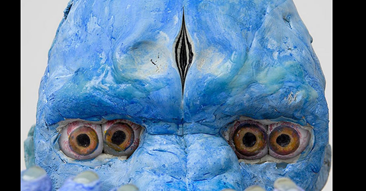
so, that is where I am at, right now, June 2, coming out of covid lockdown, and in the nervous energy leading up to my possibly reentering the world of talking to artists (though now it has been postponed, and maybe the moment will pass), we are in Zudecca, where religious, agentic, hypnagogic, syn- and epigogic dream-based art is on the rise, and on the march.
So, now I have to go back to see if when I go through Altmejd’s latest, it actually shakes out that way (as opposed to my toying with the possibility on FB, which is my “art”).
Altmejd says that his exhibition begins in the conscious mind, where things are in pieces, and that’s what is going on entering in, we are in, that is, waking life, or life informed only by consciousness.
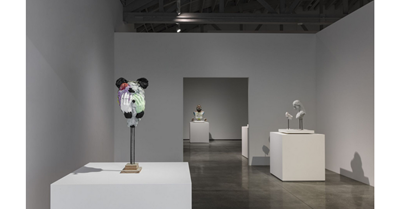
and so Matter is, like man at creation of a Claymation god, just a hunk of clay
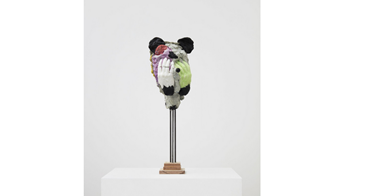
but this is also a sort of screen wipe moment, to clear the eyes, for them to then see something beyond
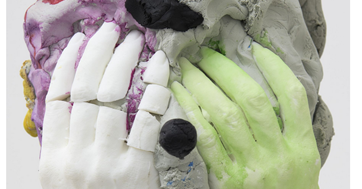
and like in work by Jonathan Meese this past season uptown, I like that lumps of clay are affixed to as if a dummy’s head to signify parts of the brain that one knows one needs to get to to live in full, but which are not got to in thinking too much. I see suggestions of cerebellum, succulus, temporal lobes, and tinnitus censors, which need to wake up, to get to it
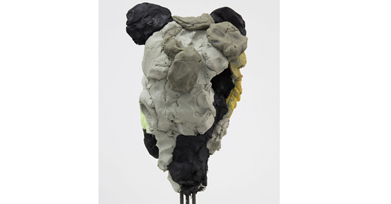
but, then, the other entome or miasmatic pieces primarily made use of as trophies over doorways elsewhere, we come to the Realization of the Witch
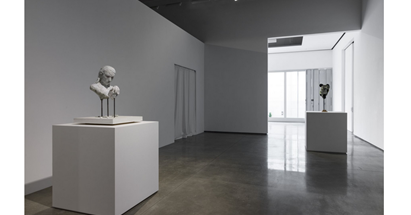
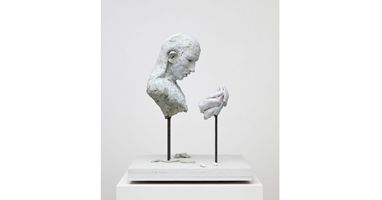
this terrific sculpture takes us to the shore of the in-between, and she will be the one to take us across into hypnagogy. The fact that she is a witch, and she is separated from a hand, even questioning it, as if it is more ghostly than her head, indicates her in-between state of being, I guess I take her as an example of the Hanged Woman trope, the one that leads us in
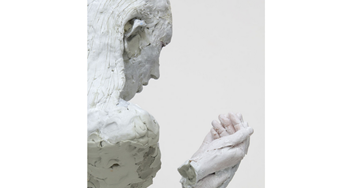
and her crossing over, her wriggling in the wobble-wobble, is conveyed by a telling detail below, a sort of snake form, suggesting the force flowing through her
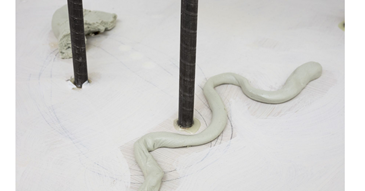
that said, the fact that she “lords over” a small sculpture set on the floor, an exciting little piece, indicates that she may rest deeper, or may in the looking, actually sink in deeper as you gaze on her, as this figure is the one trapped in the Suspirialike kunstkammer space that lies under the lattice in hypnagogy,
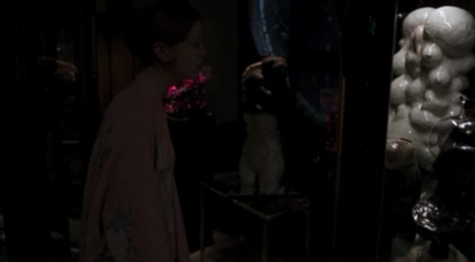
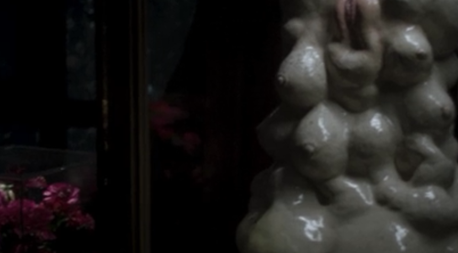
which places her in the role of the conjure demon, and then this as an object encountered “under the bed”


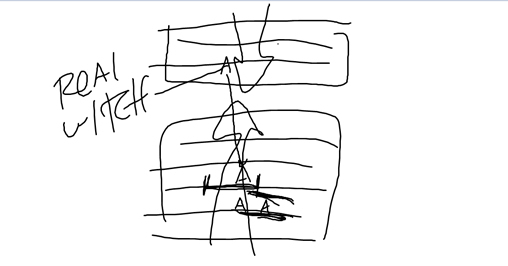
so, alas, she is a psychopomp, but also a jailer, the keeper of the kunstkammer, where beings subservient to her are kept as entomes, beings as if insects with wings torn off, under her spell, like Patricia’s fate in the kunstkammer in Suspiria (2018).
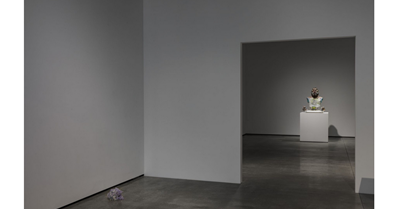
in my reading, Troll is also a prisoner of a partner sculpture, or scrylpture I called them in my post-y mode, wordplaying, and he could also be TIND-TIRH. It is characteristic of Altmejd in general that he skips quickly through vigilogogy and hypngogy, and does not even venture far into the tunnels and adjunct places of it, or the ambient from it, but moves quickly into the second and third dreams, as his work has always from the first existed in that part of the mind I now call the epigogic, which is the place of a more extravagant imagination unafraid of encountering bad demons and even monsters. And so we leap quickly.
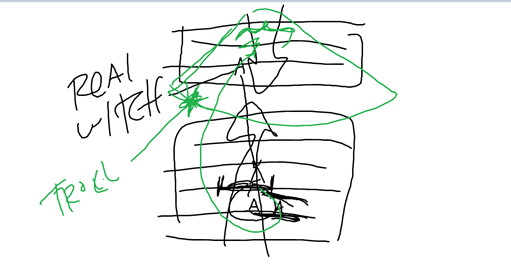
if we peruse the prisoner works as separate little dreams, coming upon Troll can be seen as the intenser scare of the syngogic elements of the second wake-up where one thinks one is awake, but you are still sleeping. It is here, in its flips, that one exclaims this is no dream, this is really happening, thus the demon. Altmejd, in language typical of the 20th century educated art world, states that it is with Troll that he feels the work crosses over from the conscious to the unconscious. My more precise phrasing is that it is here that one’s dreaming self encounters a very powerful demon, who can flip a dream to make it into a reality (the archetype being, in fact, the Satan in Rosemary’s Baby, whose mephitic green mist causes Rosemary Woodhouse, Catholic girl from Omaha, to exclaim, etc). He is quite fearsome
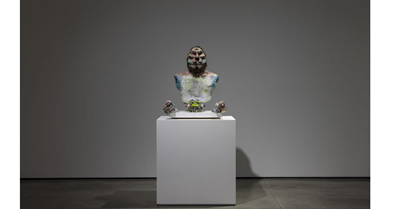
he is clearly in a gibbet formation, that is, reduced to a paralyzed position. He has no arms, which appear to have been ripped out at the sockets. his face bifurcates below, then it splits out again above, so it triangulates itself, so that he has
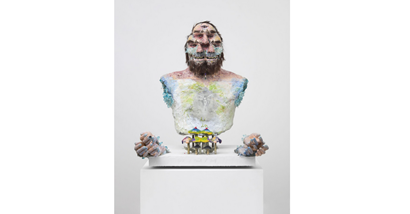
his hands are as if separate beings, disconnected, with a life of their own (their reach, like the phantom reach of Dracula in Coppola’s telling, might signify this encounter)
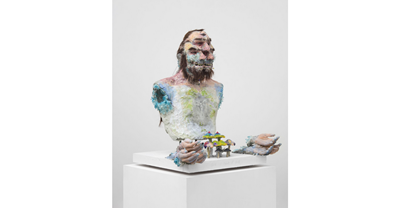
he is triply bald, as if a joke on the triple crown of the pope that Durer and others demonized in the prints of the Reformation, he also has a sort of mullet, sort of pony tail
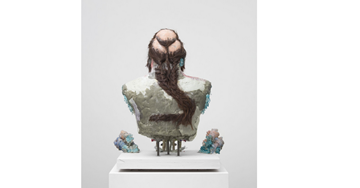
but, in fact, upon close-up, and there is a reason why the tour has so many closeups, is that he is imagined much as images are in movies during transformation scenes of werewolves and the like, and in this his physical being manifests delirium, or, in fact, a syngogy stage of dream where one does not know if one is asleep or awake
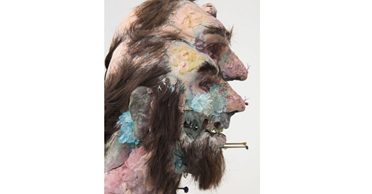
the fact that his hand has cored out, with crystals, and is turning blue, suggests he is rotting, and dead
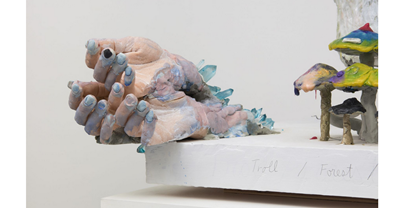
he might also be turning into stone
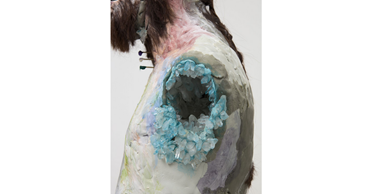
in my commentary I posited that as a troll he epitomizes the era of the green slime that we fell into in the Trump years, but I do not find in careful autopsy any indication of such a critique.
I did not mention Smoking with Myself, but here too I think this is a self wandering in the syngogic stages of the second nightmare, unclear what state one is in. Perhaps this figure embodies what one becomes when meandering in the Umwelt of one’s being, charting it out as one goes, in the dream, more intensely searching for the truth.
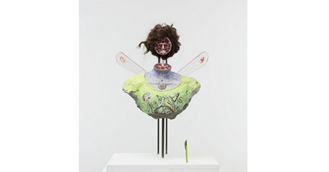
this is indicated by the fact that he has lost his head, and now has dragonfly wings. This suggests an Umwelt state of being, pared down to creaturely essentials. Here, too, the details are critical, he has a hole in his head, or his neckhole, and we see that the whole thing rot due to the green slime gone mineral, that is, he died by trollism.
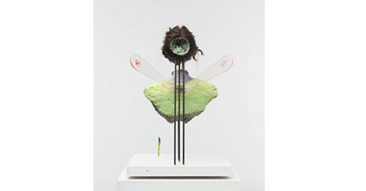
sort of leaping forward into the epigogic imagination, so, in my view, not right for this piece, Altmejd even gave figural expression to a delirious almost sequel-to-Nightmare on Elm Street level hallucination as after his neck is severed he sees in the severance of it a reflection of his face, and in the stump another, and he imagines those two as if in the mirror of the cutting, as if this was a case of twinfire, sharing a cigarette with oneself, after death.
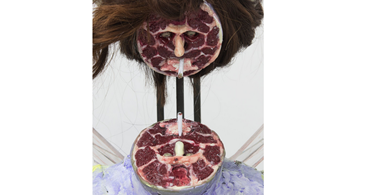
much more cryptic are the strange symbols inscribed on its body. This is the Green Eye, which presides over the second nightmare, and then some secret codes
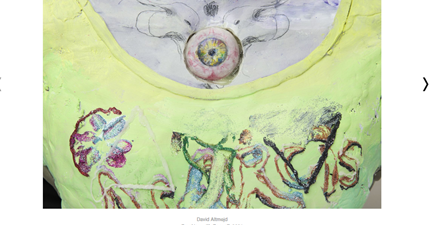
sequentially, The Troll and Smoking are part of this sector of the mind, and present hauntings at that level.
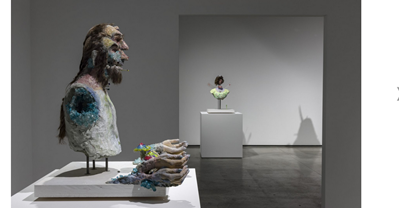
Smoking is the form the self takes when it ventures in this second sweatless dream to seek out the wisdom of one’s Umwelt, in the dreaming space; while the encounter with Troll is an encounter with TIND-TIRH, my demon of the moment, or god of day, and whose encounter is so shocking, one declares it, “this is no dream, this is really happening”.
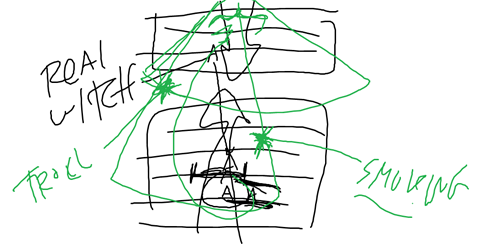
a few more words about this second stage syngogic dream. This is a zone in which one must walk some, what has to be seen is far off, and you must go through. stage syngogic dream.
To be continued.
